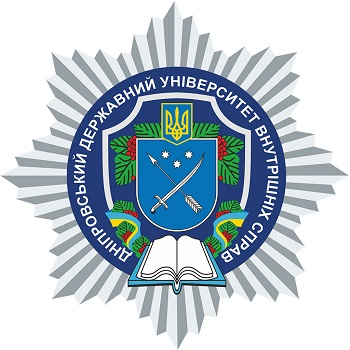TRAINING OF PERSONNEL FOR LAW ENFORCEMENT BODIES IN THE UKRAINIAN SSR IN 1956–1962 (ON THE EXAMPLE OF THE MILITIA)
DOI:
https://doi.org/10.31733/2078-3566-2024-2-37-36Keywords:
law enforcement agencies, Ministry of Internal Affairs, militia, personnel, transformation, policeAbstract
The relevant and insufficiently covered issue in historical and legal science about the transformational changes in personnel policy of the Ministry of Internal Affairs of the Ukrainian SSR in the late 50s – early 60s of the XX century is revealed. From modern methodological positions with the involvement of new historical sources, the question of the structural organization and activity of one of the leading law enforcement agencies – the militia, which was part of the Ministry of Internal Affairs of Soviet Ukraine – was rethought. The authors single out both positive and negative trends that took place in the training of personnel for the militia bodies of the Ukrainian SSR in the second half of the 1950s and early 1960s. It is emphasized that at the initial stage, staffing problems in the militia bodies were caused by excessive centralization powers of the Union Ministry of Internal Affairs to resolve personnel issues, and since 1956 – on the contrary, by decentralization, reduction of funding and reduction of militia personnel, disbandment of some educational institutions of the Ministry of the Interior of the USSR. It has been proven that the inability of personnel apparatuses of the headquarters of the Union Ministry of Internal Affairs to solve personnel problems led to a gradual redistribution of powers and their transfer to the authority of the republican Ministry of Internal Affairs. The positive trends in improving the training of qualified militia officers include the opening of training centers and special militia schools, the Higher School of the Ministry of Internal Affairs of the Ukrainian SSR in Kyiv and the increase of enrollments for them, as well as a significant improvement in the material and financial support of militia officers, the implementation of work to reduce staff turnover in this law enforcement agency. Based on a critical approach, analysis of regulatory acts, scientific publications, archival materials covering the events of the late 1950s and early 1960s it is argued that the general atmosphere of the so-called thaw contributed to the transformational changes in personnel policy of the Ministry of Internal Affairs of the Ukrainian SSR. This affected the state of law, improved training of personnel for these law enforcement agencies, reduced crime rate, etc. It was concluded that in the conditions of the then existing totalitarian system of state administration, a certain part of the tasks important for improving the activity of the militia could not be solved.
References
1. Боняк В. О. Органи охорони правопорядку України в сучасному вимірі: конституційно-правовий аспект : монографія. Дніпропетровськ : Дніпроп. держ. ун-т внутр. справ ; Ліра, 2015. 372 с.
2. Лесь І. О. Становлення та розвиток дисциплінарних правовідносин в органах міліції УСРР-УРСР (1919-1991 рр.) : дис. … канд. юрид. наук : 12.00.01. Харків, 2016. 218 с.
3. Саблук С. А. Кримінально-правовий контроль за злочинністю в Україні у 1922-1960 рр. : дис. … д-ра юрид. наук : 12.00.01 / Національна академія внутрішніх справ. Київ, 2017. 476 с.
4. Сокуренко В. В., Бандурка О. М., Греченко В. А. Підготовка охоронців правопорядку в Харкові: 100 років історії (1917–2017 рр.): До 100-річчя подій Української революції. Харків : Золота миля, 2017. 496 с.
5. Керівники Харківської міліції / поліції (1918–2021 рр.) : історико-правове дослідження / за заг. ред. В. А. Греченка. Харків : Майдан, 2021. 402 с.
6. Бандурка О. М. Секретарі, наркоми, міністри внутрішніх справ України в 1917-2022 роках. Харків : Майдан, 2022. 544 с.
7. Знання. Закон. Честь : Національний університет внутрішніх справ – 1994–2004. Харків : Вид-во Нац. ун-ту внутр. справ, 2004. 265 с.
8. Міжобласна школа підготовки молодшого і середнього начскладу УВС Харківського облвиконкому : історичний формуляр (рукопис). 1981.
9. Про прийом до навчання у Львівську та Одеську школи міліції. Радянський міліціонер. 1955. 2 червня.
10. Про встановлення МВС СРСР Почесної грамоти міліції. Радянська мілііція. 1955. № 1. С. 54.
11. Смирнов Ю. О., Михайленко П. П., Святоцький О.Д. та ін. Міліція України: історичний нарис, портрети, події : наук.-попул. видання / за заг. ред. Ю. О. Смирнова. Київ : Видавничй Дім «Ін Юре», 2002. 888 с.
12. Центральний державний архів громадських об’єднань та україніки (ЦДАГОУ). Ф. 1. Оп. 24. Спр. 4682. Арк. 244.
13. Центральний державний архів громадських об’єднань та україніки (ЦДАГОУ). Ф. 1. Оп. 24. Спр. 5140. Арк. 29–30.
14. Етапи розвитку Національної академії внутрішніх справ. Національна академія внутрішніх справ. URL : https://www.naiau.kiev.ua/pro-akademiyu/istoriya/etapi-rozvitku-nacionalnoyi-akademiyi-vnutrishnih-sprav.html.
15. Історія. ЛьвДУВС. URL : https://www.lvduvs.edu.ua/uk/history-uk.html.
16. Донецький юридичний інститут МВС України – 50 років: історія та сьогодення. Донецьк : ДЮІ ЛДУВС ім. Е. О. Дідоренка, 2011. 173 с.
17. Про пенсії та допомогу особам начальницького і рядового складу органів Міністерства внутрішніх справ та їхнім сім’ям: постанова Ради Міністрів СРСР 17 лютого 1960 р. // Міністерство внутрішніх справ України: події, керівники, документи та матеріали (1917-2017 рр.) / за заг. ред. Міністра внутр. справ України В. Б. Авакова ; Держ. НДІ МВС України. Київ : Держ. НДІ МВС України, 2012. Т. 6. Міністерство внутрішніх справ – Міністерство охорони громадського порядку Радянської України в період десталінізації та подальших реорганізацій (5 березня 1953 р. – грудень 1968 р.) / авт. кол. : М. Г. Вербенський та ін. Харків : Озеров Г. В. : Мачулін, 2016. 988 с. С. 532–537.

